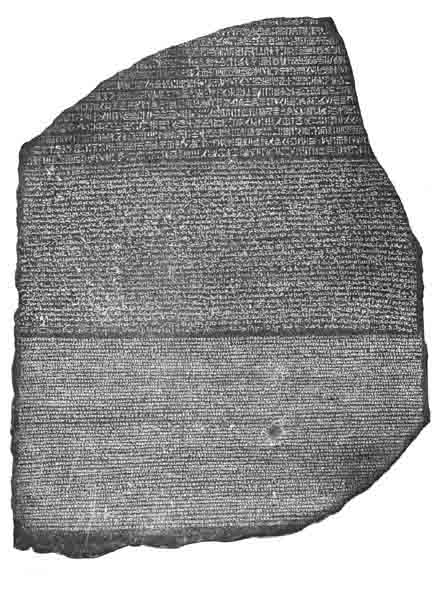Image Details

Courtesy of the Trustees of the British Museum
A large part of the left upper corner and a portion of the upper and lower right corners are missing. Judging from other Ptolemaic stellae, the top was probably rounded and may have contained a small relief of Horus, the havok god. Dating to 196 B.C., the stone is inscribed with a decree passed by a general council of priests that assembled at Memphis on the first anniversary of the coronation of Ptolemy V Epiphanes of Egypt. The text concerned honors bestowed on Ptolemy V by the priests of Egypt in return for the services rendered by him to Egypt both at home and abroad. Priestly privileges, especially those of an economic nature, are listed in great detail.
Thomas Young, Jean-Francois Champollion and others observed that certain hieroglyphs on the Rosetta Stone were encircled in frames, called cartouches. They presumed that the cartouches contained royal names. Using the readable Greek and the demotic texts, the latter already deciphered by Young, Champollion assumed that the cartouche seen in lines 6, 12, and 14 of the Rosetta Stone contained the name of Ptolemy. The signs in these cartouches vary slightly because they contain different royal epithets as well as Ptolemy’s name. Champollion assigned an appropriate Greek and English letter to each hieroglyphic symbol in the name of Ptolemy in the cartouche. With this as a beginning, Champollion then began the painstaking process of decoding the rest of the hieroglyphic symbols.
